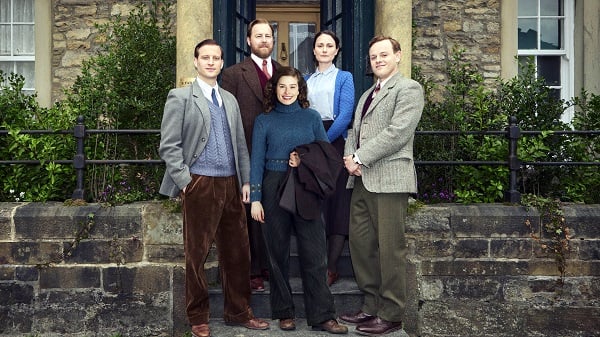
The Fall and Rise of Lyle and Erik Menendez: True Crime’s Unexpected Influence
In the universe of true crime, few tales are as gripping and haunting as that of Lyle and Erik Menendez. Bursting into the national consciousness in 1989, the siblings were convicted for the shocking shotgun murders of their parents, Jose and Kitty Menendez, in Beverly Hills. Sentenced to life in prison with no hope of parole, their saga seemed settled in the annals of infamy. However, as the cultural impact of true crime entertainment continues to burgeon, the Menendez brothers might just find themselves back in the spotlight – not for their crimes, but for a potential chance at freedom.
 The Menendez brothers have remained a focal subject in the world of true crime.
The Menendez brothers have remained a focal subject in the world of true crime.
The Transformation of True Crime
The explosion of platforms like Netflix, particularly with docudramas such as Monsters: The Lyle and Erik Menendez Story, has tapped into a profound public fascination with the darker corners of human experience. From podcasts to TikToks, the genre has evolved dramatically; while true crime once focused on the details of gruesome acts, today’s content often sheds light on the societal and psychological factors behind them. Adam Banner, a noted criminal defense attorney, points out that these new narratives offer a humanizing perspective:
“This context helps us understand the complexities of such cases, distinguishing the Menendez brothers’ plight from general expressions of evil.”
While their past is sordid, many are beginning to view their story through a lens of empathy. The release of new examination materials invites public discourse about their unresolved claims of abuse, enabling a fresh commentary that may challenge their initial portrayals.
A Shift in Narrative: The Antihero Phenomenon
The Menendez brothers are emblematic of a broader cultural phenomenon in true crime: the emergence of the antihero. Instead of demonizing protagonists, modern true crime products frequently explore the backgrounds of those involved to foster understanding. As Maurice Chammah, an astute journalist, notes, past narratives locked on guilt and punishment, but innovations sparked by Serial have paved the way for retelling the stories of those perceived as victims or wrongly accused.
The entire landscape of public perception is changing. In recent years, movements focusing on justice and historical wrongs have paired with our storytelling instinct to reinterpret figures like the Menendez brothers in a sympathetic light. While legal systems remain slow to adapt, media stirs a potent blend of emotion and inquiry that keeps the conversation alive.
 The cultural influence of true crime continues to grow, giving birth to a new era of storytelling.
The cultural influence of true crime continues to grow, giving birth to a new era of storytelling.
The Role of Audience Engagement
With true crime entering the realm of social media, viewer participation has risen dramatically. Whitney Phillips from the University of Oregon highlights that these platforms encourage amateur sleuthing, often with little regard for the ethical implications. “The audience’s involvement can create scenarios where innocent people are unfairly implicated, and the integrity of victims becomes compromised in sensational narratives,” she explains. This participatory culture is creating a double-edged sword, combining engagement with the potential for harm.
As the lines blur between entertainment and ethics, the burgeoning genre risks overshadowing serious discourse with frivolity and irresponsible storytelling. Yet, the influence of true crime on the public’s understanding of justice cannot be denied. In many ways, characters such as the Menendez brothers encapsulate how the genre’s evolution might yet aid in exposing and rectifying past misjudgments.
Ethical Dilemmas in an Attention Economy
Despite the mixed implications, Phillips emphasizes that true crime itself is not inherently unethical; rather, it’s the dynamics of the social media landscape that are troublesome. The system prioritizes views, engagement, and sensationalism over ethical considerations, resulting in a convergence of entertainment and real-life tragedies. From makeup tutorials to lifestyle blogs, the genre’s unmistakable influence infiltrates various forms of content, often prioritizing clickbait over accurate storytelling.
As audiences crave more sensationalist tales, researchers and ethical commentators urge a return to responsible narratives that respect the subject matter and its impact on victims and their families. The popularity of series like Only Murders in the Building reflects the public’s appetite for true crime but calls attention to the necessity of delivering this content with care and critical thinking.
 Shows about true crime reflect a growing societal curiosity.
Shows about true crime reflect a growing societal curiosity.
Conclusion: A New Chapter for the Menendez Brothers?
With the increasing prominence of true crime narratives that explore psychological trauma and systemic failures, the Menendez brothers could find themselves at the intersection of cultural empathy and judicial reconsideration. While a total exoneration may still be out of reach, the stories being told today can significantly influence societal views on justice and mercy. As true crime continues its powerful evolution, only time will tell whether these narratives can result in tangible change for those like Lyle and Erik Menendez, caught in a web of sensationalism and scandal.
In a world where entertainment increasingly influences real outcomes, the Menendez brothers’ saga serves as a vital case study on the implications of our fascination with crime. The true crime genre’s dual role—both a window into societal dark spots and a potential force for change—has never been more apparent.












